A Watchdog for Hanford Nuclear
Columbia River Basin
|
NEW ESRI StoryMaps: What's On Our Shelves & NWNL Song Library & No Water No Life ESRI |
Columbia River Basin
Gerry Pollet
Founding Director of Heart of America Northwest
Alison M. Jones
NWNL Director and Photographer
All images © Alison M. Jones. All rights reserved.
Thirteen years after this Voice of the River interview, Gerry Pollet’s newsletters continue to convey a commitment to environmental justice for those still affected by contamination from nuclear-weapons production begun during WWII with the bomb that was dropped on Nagasaki, Japan. In January 2020, Gerry Pollet contributed a NWNL Blog, Environmental Justice for Columbia River Tribes at Hanford.
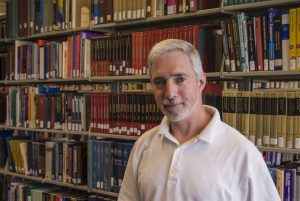
NWNL Gerry, thank you for my tour around Hanford Nuclear Site, just north of Richland WA, and especially for including the 300 Area for fuel and reactor testing. The Columbia River, running through Hanford, has a strong influence of the health and economics of the Northwest. You founded Heart of America Northwest as the region’s largest Hanford cleanup watchdog group, expecting it will take 20 to 40 more years — or longer — to meet this lethal challenge. Is there really no plan for many of Hanford’s problems?
GERRY POLLET Our 16,000 members from Washington and Oregon are committed to cleaning up the legacy of nuclear-weapons production at Hanford before further contamination of the Columbia River or more accidents risk the health of all people in the Northwest. Hanford, twenty years ago, was not only the most contaminated place in the Western Hemisphere, it was one of the most secretive places in the Western Hemisphere. Hanford is also the most dangerous industrial facility outside of the Soviet Union’s nuclear weapons plants. Those weapons plants, which make the contamination here seem liked nothing, were based on Hanford. Their explosion of high-level nuclear waste has left thousands of square kilometers contaminated in Russia. People drink water with radioactive contamination we couldn’t imagine. That is our future if there’s no plan in place to stop Hanford’s groundwater contamination now entering the Columbia River and flowing through it for 50 miles. That enormous stretch of the Columbia River is the last free-flowing stretch of the Columbia River. People wrongly refer to this river as pristine. That’s a joke. It’s the only National Monument in the United States that’s too contaminated for safe public use.
NWNL Yet there is boating down this reach of the river?
GERRY POLLET The Department of Energy [hereafter, DOE] has spent 60 years trying to close this stretch of the river for security reasons. Then they said, ”Oh, it’s perfectly safe – come use it.” We have fought tooth and nail to put up signs along the river to keep people off of the contaminated south-shore riverbanks. The islands folks use have serious contamination problems. They’re not safe for people, much less for spawning salmon or the clams.
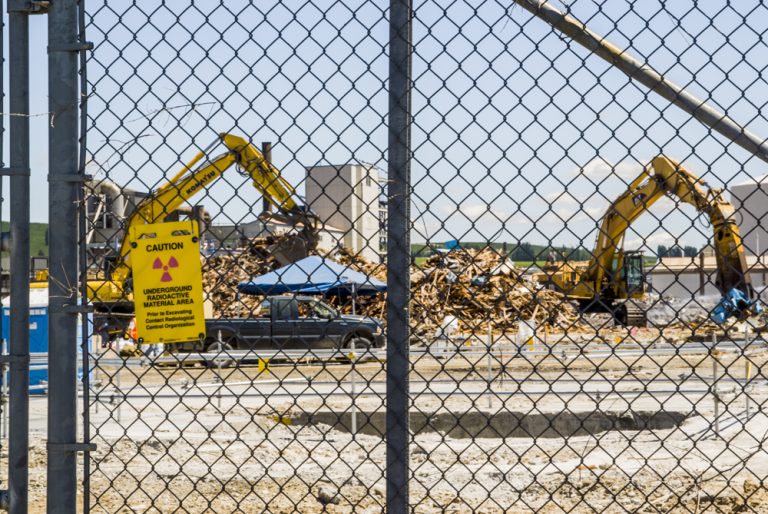
NWNL What are the health risks to humans?
GERRY POLLET Well, if you drink water from the middle of the river, the health risk is miniscule. But if your 3-year-old is splashing in a pool of warm water at the river’s edge, your child is playing in groundwater flowing off of Hanford Nuclear Reservation with radioactive and carcinogenic chemical contaminants – some 2,000 times the drinking water standard.
NWNL What does your group do to counter this situation?
GERRY POLLET For 20 years we’ve dealt US nuclear weapons production by DOE, as it builds new warheads for Complex 2030 (a nuclear weapons complex). Hanford is where the DOE hopes to bury nuclear and chemical wastes from the next 40 years of nuclear weapons production. They’d hoped to use 1000’ long by 50’ wide unlined trenches at Hanford that are just ditches. Our city governments can’t use unlined landfills for municipal garbage, but our federal government thinks that it’s okay to bury radioactive waste in unlined ditches.
A Washington State ballot initiative could ban dumping in unlined trenches and require sites like Hanford comply with hazardous waste laws. The DOE, when faced with photographs of its unlined dumping in 2004 said, “Okay, we’ll stop.” But they are contaminating other places, threatening the Rio Grande in New Mexico, the Savannah River, the Snake River aquifer and other rivers by dumping waste in unlined ditches.
NWNL The Snake River is the Columbia River’s major tributary.
GERRY POLLET Yes, it flows in just a couple of miles here, so the Columbia River faces a dual threat from DOE’s nuclear-weapons production: upstream on the Snake River at the Idaho National Engineering Lab and here on the Columbia for fifty miles at Hanford Nuclear Reservation.
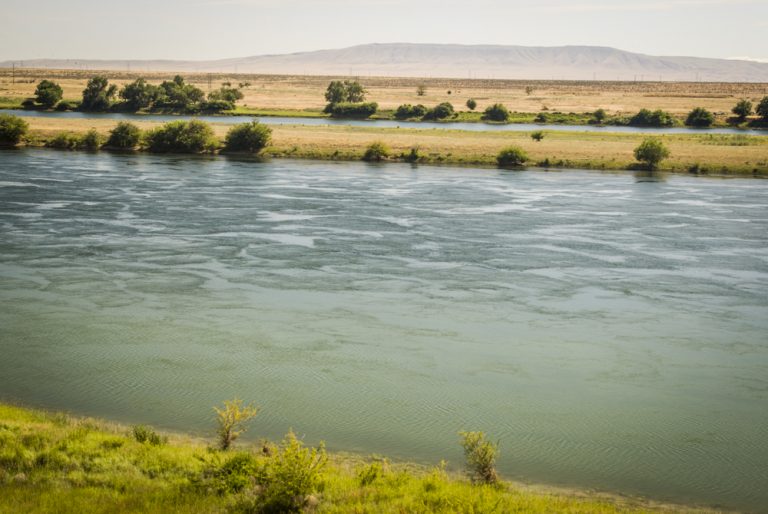
NWNL What about Midnight Mine, which is further upstream and closed now, but apparently still leaching waste from its uranium mining?
GERRY POLLET Yes, that’s more of the government being too cozy with industry and saying they’ve cleaned up something that still has serious contamination problems. We did stop them dumping more radioactive waste in the Midnight Mine, after years of Dawn Mining Company and the State saying, “We’ll fill in the mine with radioactive waste as cleanup.” But while DOE put $1 billion on new nuclear weapons and their production facilities in its 2008-2009 budget, it’s cut its 2006 National Cleanup Fund by $1 billion – a zero-sum game since both cleanup and new nuclear weapons come out of the same Congressional account. DOE is now breaking its commitment to increase Hanford’s 1998-2002 cleanup funds. Cleanup funds for Hanford and places like Denver’s Rocky Flats are being diverted to fund weapons production.
DOE is fighting to use Hanford as a national nuclear waste dump – not for cleanup money. It’s not in court or demanding that Congress provide money. It’s fighting tooth and nail to use Hanford as a nuclear waste dump, adding waste to the most contaminated place and ignoring state and federal hazardous waste laws.
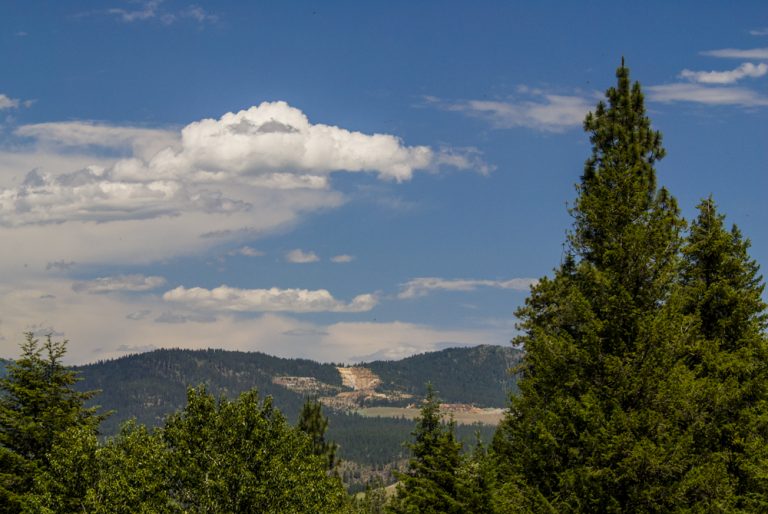
NWNL What about the decision on Yucca Mountain as a waste dump?
GERRY POLLET Yucca Mountain is for commercial high-level waste: spent fuel rods and high-level waste from nuclear weapons production. Essentially, there are different types of nuclear waste. DOE planned to put fuel rods and melted-down fuel rods (both high-level nuclear waste) into Yucca Mountain. But Yucca Mountain will never have enough capacity for the high-level nuclear waste we already have, much less what DOE plans to keep producing. So, it has a problem.
DOE also labels nuclear waste that’s not high-level and transuranic non-plutonium waste as “low-level,” which is a PR misnomer, as those wastes can be as radioactive as high-level waste. This is what DOE proposes to send to be buried at Hanford. It may be mixed chemical and radioactive waste, thus dramatically increasing risks to the Columbia River and our groundwater.
Over the next 10 years, the White House Office of Management and Budget’s target budget for cleanup at Hanford is an amazing $5 billion short of existing legal requirements – and is without any plan to cleanup the groundwater. So, we are the proverbial boy putting a finger in the dike here and here and here, saying we’re doing something about the groundwater, even as massive amounts of contamination continue to head towards the river and the shoreline.
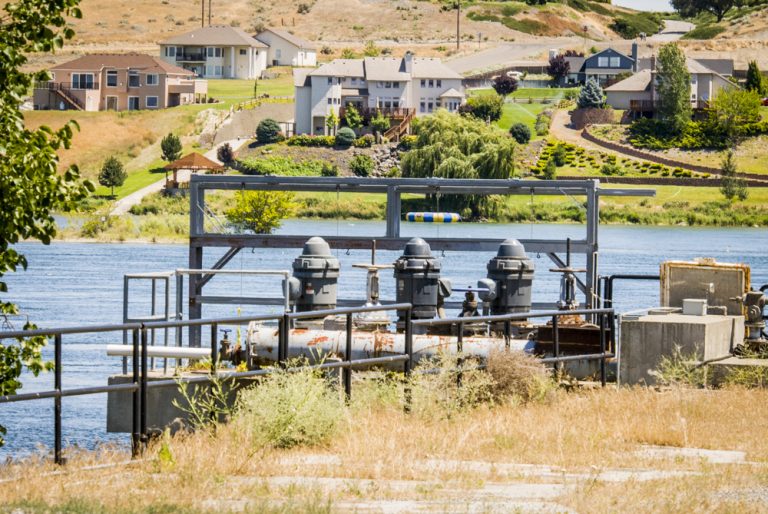
NWNL How are you able to monitor that?
GERRY POLLET DOE has extensive groundwater monitoring wells along the river and inland. There are not enough, and many are in the wrong place or measuring for the wrong thing. Although improved over the last 10 years, DOE’s groundwater monitoring is still woefully and legally inadequate.
At Hanford’s DOE Library, the Annual Groundwater Monitoring Report shows each of Hanford’s wells and their radioactive contamination, including along the shoreline. There are 53 million gallons of liquid high-level nuclear in leaky tanks underground. These million-gallon tanks are the size of a 4-story apartment building covering an entire block. They are massive: you could put a full-sized basketball court on the floor of these tanks.
Thirty-five million gallons of this waste are sitting in the oldest, single shelled tanks. A billion gallons of these deadly wastes from 67 of these tanks have leaked and are spreading much faster and much further than DOE claimed possible. It has reached groundwater, which DOE said would take 2,000-4,000 years.
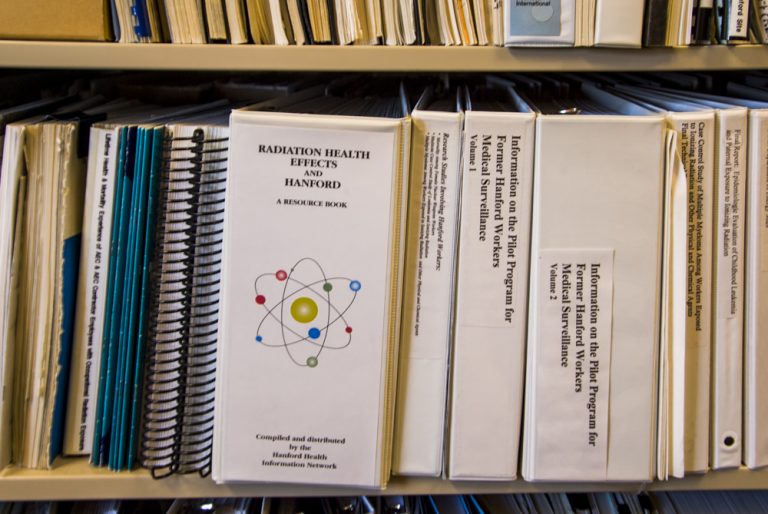
NWNL Is that from research you can do here in this library?
GERRY POLLET Yes, via monitoring reports. Heart of America Northwest recently published a report by geophysicists and the licensed geologic engineer in charge in the ‘90’s of monitoring gamma radiation contaminants leaking from single-shell tanks. He reviewed the data that shows recent leakage from the tanks, which DOE denies. Intensely radioactive contaminants, like Sesium and Cobalt which are very heavy and not supposed to move, have reached groundwater. For the last couple years, DOE has admitted that radioactive Technicium (a contaminant that moves quickly through the soil with water) has reached groundwater and is spreading rapidly.
There is a massive plume reaching the river and over 80 square miles of Hanford on the river and covering the land area of Seattle that are contaminated above drinking-water standards by Hanford’s dumping of liquid wastes. It is a massive area where DOE built and operated nuclear reactors. The plumes are entering the Columbia River along fifty miles and areas where fuel was manufactured and tested and dissolved.
We want to stress to people that this is not ancient history. One of the great myths put out by DOE and its contractors is, “Oh, that was long ago that we dumped liquid waste.” No. Many who dumped liquid waste and fought to keep dumping liquid waste next to the Columbia River are still managing DOE.
In 1991, Heart of America Northwest sued DOE for annually dumping 2 billion gallons of untreated liquid waste into the soil, mostly right along the Columbia River and up on the Central Plateau. At that time our state government and U.S. EPA sided with DOE and said, “Oh, yeah, that’s okay. You can keep dumping liquid waste even while you are saying that you are cleaning it up.” It took three years until the Clinton Administration met with us and said, “You’re right, we can’t claim to be cleaning up when we are making it worse.” They settled the lawsuit and agreed to stop dumping liquid wastes.
Many managers said the soil had become so contaminated that like a dirty sponge, if you dumped pure water in the soil in any of these locations, dirty water went into the river. Even faced with that, until 2004 these managers said it’s okay to dump waste in unlined soil trenches if it’s solid waste. These same managers are running Hanford today. This is not ancient history.
We have slides of pits, burial trenches and landfills that DOE shows as capped – but they are not capped. We have waste coming out of them. Nor are their barrels nicely stacked. They’re just thrown into ditches and most have deteriorated. DOE had a term for it. They called it “random disposal,” as if this was something other than dumping waste right off the back of a truck.
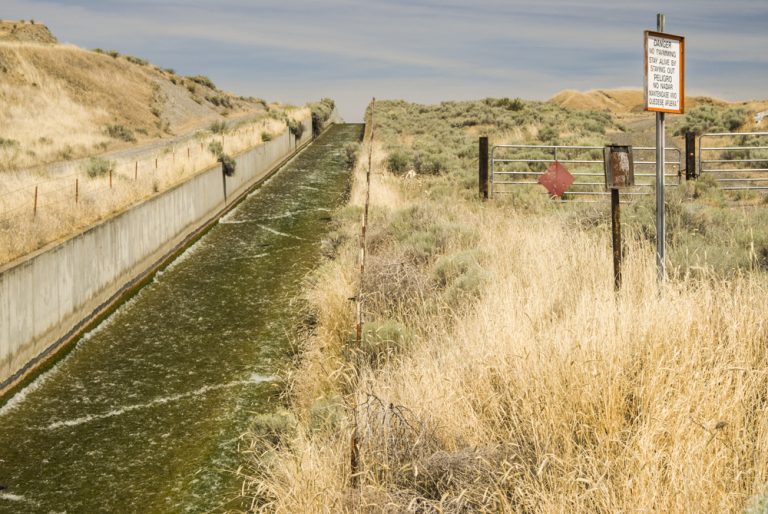
NWNL And again, how do you know this?
GERRY POLLET We have pictures. I’ve witnessed it. We fought for years to end waste dumped in unlined ditches. Finally, Heart of America Northwest led efforts to put Initiative 297 on the ballot saying state law would forbid adding mixed radioactive chemical wastes to a disposal site not in compliance with current hazardous waste laws (or not cleaned up).
DOE has gone to court with Hanford contractors to overturn this Initiative. A lower court overturned it saying the state was pre-empted from setting standards for cleanup and groundwater if it involved radio nuclides.
NWNL Because that’s a federal responsibility?
GERRY POLLET That’s what they say. And we believe that Congress has clearly said it cannot trust DOE and mandates that DOE follow state hazardous waste laws. However, DOE has never willingly followed state hazardous-waste laws. It fights to overturn these laws. If they do, there’ll be little cleanup at Hanford or any other contaminated nuclear weapon sites.
Right now, there are no funds, schedule or plan to clean up our 80 square miles of groundwater contaminated above ground drinking water standards. The Secretary of Energy testified to Congress last year that the single-shell, high-level nuclear waste tanks are “stable, monitored and we find no indication of additional leakage or movement.” When asked, “So you disagree that we have to empty those tanks quickly?” Washington’s Senator Cantwell said, “Yes.”
There are 6 high-level nuclear waste tanks with massive surface contamination that goes down to groundwater. We’re 670’ feet above sea level, and the groundwater level is 450.’ A gamma probe put beneath the bottom of the tanks recorded massive gamma radiation from the monitoring well. Right above the groundwater, we have Cobalt and Cesium. DOE’s model say that can’t be. They pretend it’s not there because the model says it can’t be there.
Monitoring-log data shows an unreported 50-fold increase in gamma-emitting radiation by Cobalt 60 and Cesium between 1996 and 2002. It’s pretty clear it’s beneath the bottom of the tank because there’s no contamination until 40’ below surface. It’s a good bet that if you start getting a hit at 40’ feet (which is the bottom of the tank), that leak came from the tank. In violation of numerous laws – even criminal violation, DOE failed to report this potential leak. They claim this high-level nuclear waste tank is “controlled, clean and stable” – their own term for massive contamination.
The leaks have occurred recently. These tanks are not properly monitored. There’s no legally adequate, monitoring system around them. Contamination reaches groundwater and we have a 50-fold, unreported increase in contamination. What are we going to do about the leaks from these tanks? Nothing. DOE plans to do nothing about the leaks from these tanks. Their idea of “closing” the high-level nuclear waste tanks 20 to 40 years from now, is covering the top and never doing anything to stop contamination moving through the soil. In 12 to 25 years, contamination will hit the groundwater and enter the Columbia River. When that happens, the river is gone.
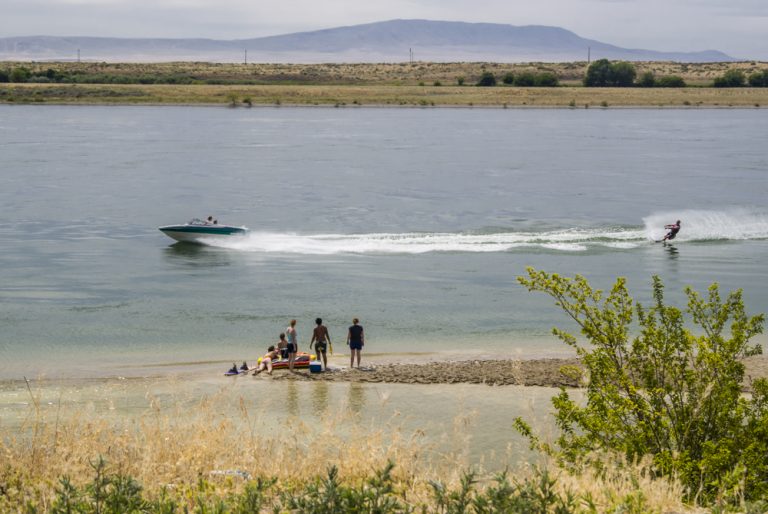
NWNL Can you be more specific about that?
GERRY POLLET Today, contaminants hitting the shorelines of the Hanford Reach National Monument are 1,000 times the drinking water standards. But that is nothing compared to what will happen when high-level, waste-tank leaks and other contaminants from the Central Plateau hit the Columbia River. These are much more concentrated and include many, many radio-nuclides and chemicals not in the massive concentrations dumped next to the Columbia River thus far.
NWNL How far would this plume of contamination be carried?
GERRY POLLET It depends on which way the groundwater flows, which is controversial because it has been changing at Hanford. The plume either flows north directly to the river for 6 miles or flows east in more circuitous route for 6 to 12 miles.
NWNL But once it enters the Columbia River, how far will that plume go downriver?
GERRY POLLET There is no study of that. The Columbia River has a massive dilution factor; but people would be drinking Plutonium, Cesium and Technisium because it is there. And no one is going to want to eat our Concord grapes or make them into wine. No one is going to want to eat potatoes grown with water that came off of the Hanford Nuclear Reservation. The sad truth is that we have a growing water crisis in eastern Washington. Water is getting scarcer, and we are battling over allocating water from the river. At the same time, if cleaned up, this massive area of groundwater, could be a wonderful resource. Instead we’re allowing it to be massively contaminated, thus threatening our ability to withdraw water from the Columbia itself.
NWNL Your material states there are 3 million people downriver of Hanford. How far would that contamination go in a concentration detrimental to the health?
GERRY POLLET As long as the Columbia’s water is below the drinking water standard, they’ll allow its withdrawal. The drinking water standard allows one adult to die of cancer for every ten thousand who drink 2 liters/day. Children are 3 times more susceptible to the same dose. That’s 3 to 10 children for every 10 thousand dying of cancer; and 5 cancers for every 1 death. The math goes on.
We have significant cancer risks, especially for children, downstream before the federal government says. “Oh, that’s above the drinking water standard. Sufficient dilution would probably occur before it reaches Portland. Portland doesn’t use Columbia River water for drinking. But irrigators and towns up and down the Columbia from here to the coast use it. The City of Richland, where we are sitting, takes water out of the river just a couple of miles down from here – literally a mile below the edge of this Nuclear Reservation.
The vitrification plant, which would turn that liquid, high-level, nuclear waste into glass is $8 billion over budget. It probably won’t work the way it’s been designed. It is a classic case of the current DOE giving contractors billions of dollars and wasting it.
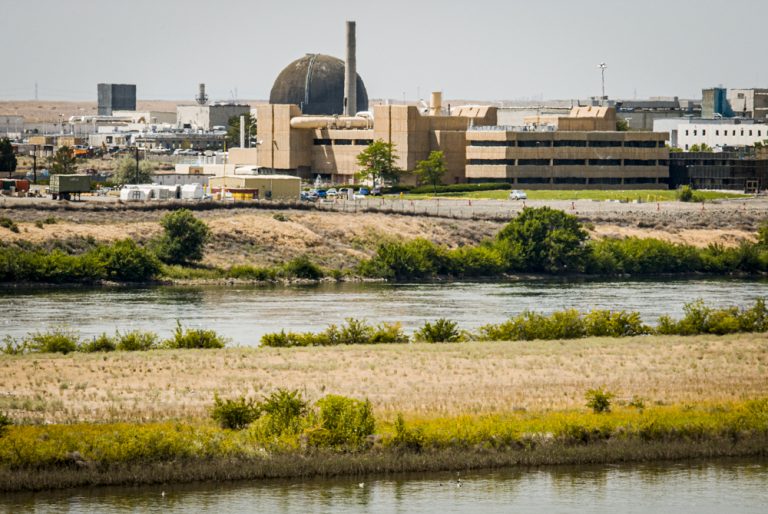
NWNL I hear there’s been no impact study on the plant or the design, yet they are still planning to go ahead with it.
GERRY POLLET Vitrification is the right thing to do; but there is no environmental impact statement yet. There are options, but they decided to pay the contractor to start building before they had done the design. Everyone knows what they’re doing is ridiculous.
DOE wants to slow down emptying the remaining 140 single-shell tanks. They want to empty one a year – taking 140 years to get the job done. In the meantime, we know that more waste will leak; more contamination will spread; and you can’t clean up the waste under the tanks until you’ve emptied them.
NWNL What does it cost to empty a tank?
GERRY POLLET It costs $16 to $20 million to empty one tank. Single-shell tanks have sludges in them that are very hard to empty. The sad truth is the longer we wait, the more risk because emptying the tanks involves putting high-pulse jets of water (or other waste) into a tank to dissolve the waste and sluice it off of the walls. Well, in some of the tanks, the walls are no longer intact and will become less so in the next 10 to15 years. We’ll be at greater risk, if we don’t begin emptying the tanks right now. But DOE wants to just empty 1 tank/year. Years ago, their agreement with the State of Washington said they’d empty all the tanks by 2018. At one per year, the DOE will still have 130 tanks to empty in 2018.
In February, in a Congressional budget request DOE said it will take 14 years longer to empty the tanks than the law allows. What can we do about it? Well, DOE says, nothing. DOE has taken us, the State of Washington, the voters of Washington to court to say under federal and state Hazardous Waste Laws we have no authority to order DOE to empty tanks or clean up leaks to the extent practicable.
NWNL So that’s a dead end for you?
GERRY POLLET Well, we are hoping that the Ninth Circuit Court of Appeals will reverse DOE. We’re pretty confident we’ll prevail in the end. If we don’t prevail in court, we are pretty confident because Congress has said for years, “We know that left to itself, DOE will never clean up.
NWNL Does the Ninth Circuit Court of Appeals have jurisdiction over DOE?
GERRY POLLET Yes. They have jurisdiction over any Washington State case.
Now the Bush administration is proposing to add high-level spent nuclear waste from all over the world to Hanford for reprocessing (which created the high-level nuclear waste in those tanks now). The spent fuel will never go to Yucca Mountain. We know that. So, we are going to choose two places around the country where we are going to send all the nation’s and much of the world’s high-level nuclear waste.
NWNL Why does our government control the rest of the world’s nuclear waste?
GERRY POLLET They have reached agreements with Japan and other places saying, “We will melt down fuel rods, extract plutonium and uranium for new fuel, and then sell you new fuel for a new type of reactor.” That melting of fuel rods for plutonium and uranium is what created the liquid high-level nuclear waste at Hanford, six miles from where we are sitting. And DOE admits that for decades they can’t get that waste out of tanks already leaking and contaminating the groundwater. Basically, the US wants to get in on the nuclear fuel cycle.
NWNL The Bush Administration sees nuclear energy as solving global warming?
GERRY POLLET Yes, it supports nuclear energy and a new type. Essentially, they are proposing shallow land burial in lieu of safe geologic disposal. Massive amounts of high-level nuclear waste would end up in Hanford soil under this proposal. More waste from this process would end up in the landfills. DOE says will add more waste but won’t clean up the groundwater. So right now, that’s where the Hanford cleanup stands.
DOE is asking Washington State to relax deadlines for waste removal and vitrification, because it can’t meet the deadlines that exist today – even though they’ve been revised five times On behalf of the public, we are advocating realistic deadlines for actions in exchange for DOE cleaning up the groundwater at Hanford. DOE is throwing $12 billion at a vitrification plant and has an $8 billion cost overrun. We’re asking DOE to spend $2 billion (or less) to clean-up the groundwater next to the fifty mile stretch of the Columbia by 2018. Our public interest goal is to be able to actually use the Columbia River and the Hanford Reach National Monument by 2018.
Then we can address inland clean-up of the contamination spreading from the tanks and processing plants. DOE thus far has refused to sign up to any cleanup of groundwater in the 300 Area, the fuel and reactor test area right north of the City of Richland. DOE said they don’t have to clean up the uranium in the 300 Area groundwater. Here, just ¼ mile up from the Columbia River, they were dumping ¼ billion gallons of untreated liquid wastes until 1994. That 300 Area groundwater and soil are heavily contaminated with uranium which is flowing into the river.
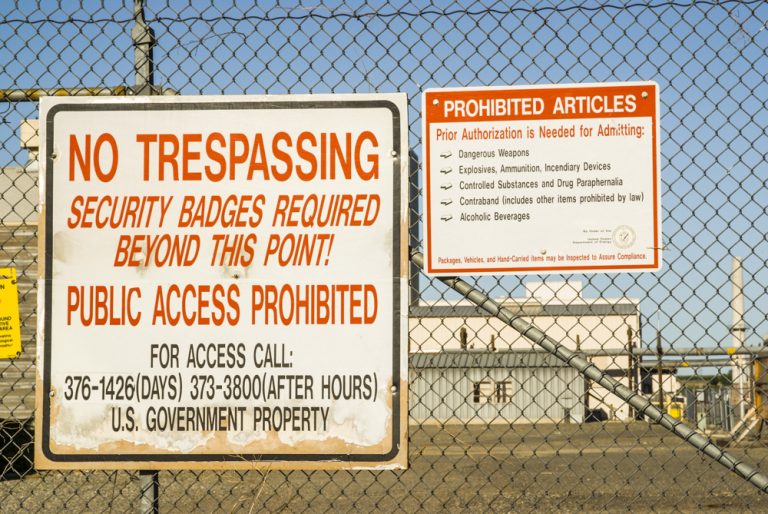
Seven years ago, over the objections of the tribes, Heart of America Northwest and other citizen groups, DOE said to the EPA and the State of Washington, “Trust us: if you just let the uranium sit, it will naturally attenuate and go down.” Of course, the plume has instead gotten worse. The EPA recently did a review and said, “Okay, we are going to have to do something about it.”
But what to do is still very controversial – especially when DOE is dragging its feet on cleaning up surface contamination and is still using buildings that contributed to the contamination. They had previously said they’d take them all down. Now DOE is saying, “Oh, we still might want to use those buildings, which means we have a problem cleaning up and preventing the contaminants from the buildings getting into the river.”
NWNL What are the responsibilities of The Office of River Protection?
GERRY POLLET That is just a public relations name. It actually deals with high-level nuclear waste tanks – not the river. They do nothing along the river corridor at all.
NWNL To whom does this Office of River Protection report?
GERRY POLLET It’s part of DOE. Essentially Hanford was under one DOE manager for 50 years. Then to increase the visibility of the high-level waste tank funding, DOE and Congress created 2 managers for Hanford: 1 field office for high-level nuclear waste tanks; and 1 field office for everything else. So, the Office of River Protection managers are responsible for the $12 billion vitrification plant that’s going to be 8 years late and $8 billion over budget. They never address cleaning up leaks from high-level waste tanks.
It is a cruel joke to call it The Office of River Protection since they fight to overturn state law that says you have to clean up your leaks to the extent practicable.
NWNL Dare I even ask how you feel about nuclear energy being touted as a clean alternative to coal and other polluting sources of energy? What alternative to fossil fuels you would propose other than nuclear energy?
GERRY POLLET The notion that you are going to dramatically affect climate change and global warming with nuclear energy defies the math. One-third of US CO2 emissions comes from electrical production. Nuclear energy currently produces 20% of our electricity. If you increase that by adding 100 more nuclear reactors, you only add another 20% percent – but you have a massive waste problem. Can you say that nuclear energy is clean when the nuclear energy industry and DOE would melt down and create more liquid high-level nuclear waste? We don’t know how to dispose that and thus it is contaminating our groundwater as we speak. Would you say coal is clean because it doesn’t create nuclear waste?
Nuclear power and reprocessing are only clean in that they don’t produce CO2. They just contaminate your groundwater with cancer-causing radio-nuclides and chemicals. Oh, and they also give off a few air emissions. It’s not at all part of a meaningful solution to climate change in the United States, much less the world.
Our Tri-Cities managers just had a public meeting about DOE’s and Hanford’s plan to site a global nuclear expansion program here. There were 300 people saying, “Bring it on. Do it here. We need to have nuclear reactors all over the world. They are the solution for the Third World.”
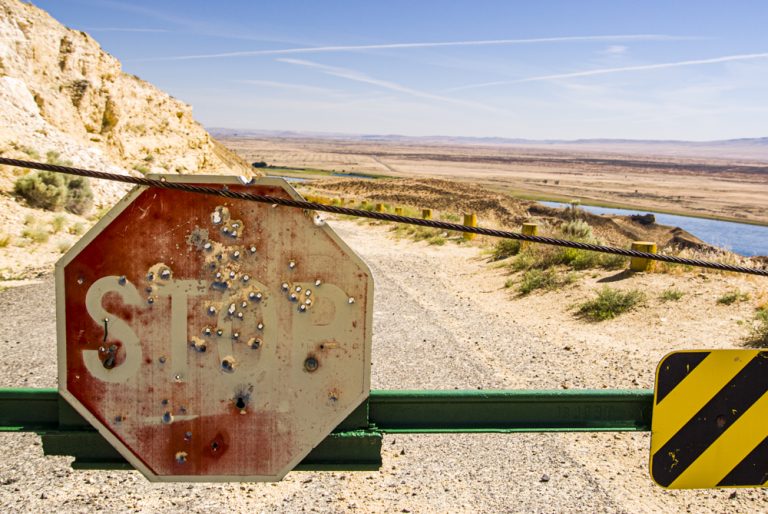
As I looked out at Hanford Nuclear Reservation, I said, “The sophisticated United States, with all our laws, is dumping nuclear waste into unlined ditches. We can’t dispose of our liquid high-level nuclear wastes. They are contaminating our groundwater. What are you going to do in the Third World? Are you going to pretend that it’s an appropriate technology when we can’t deal with it here? In Africa, their wastes are going to go straight into dumps if they are lucky. They will contaminate their groundwater and drinking water sources.”
It is inappropriate – not to mention the foolhardiness of spending a billion dollars in a third-world country – to build a reactor that then requires outside assistance and operation. Who’s going to do that there, if we don’t trust the industry in the United States to run a nuclear reactor safely? Who’ll regulate and ensure it is safe somewhere else? A billion dollars could provide much of Africa with clean drinking water. Billions of dollars could provide much of Africa with solar and wind energy, instead of a hundred reactors. So why spend $100 billion on reactors, versus $100 billion on more appropriate technologies?
NWNL Gerry, thank you for sharing your knowledge of so many issues. The State of Washington and the rest of the world is fortunate to have you as a watchdog.
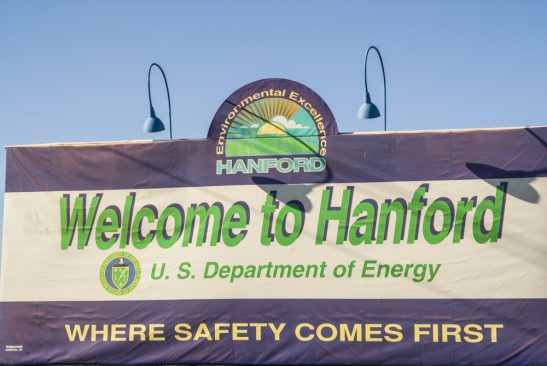
Posted by NWNL on January 22, 2020.
Transcription edited and condensed for clarity by Alison M. Jones.
All images © Alison M. Jones. All rights reserved.
